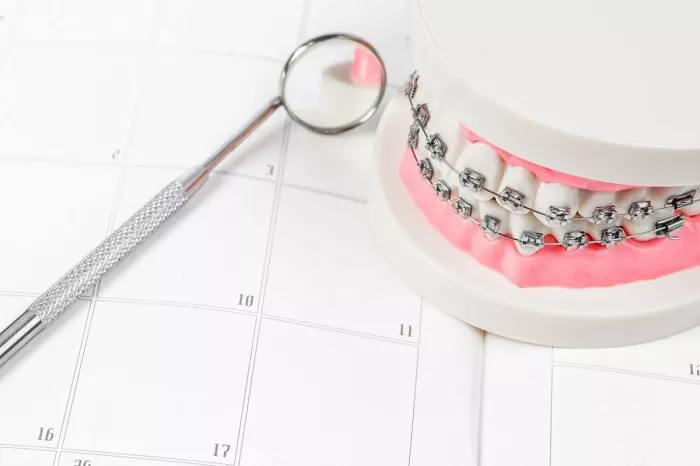Orthodontic wax is a essential tool for anyone undergoing orthodontic treatment, especially those with braces. It provides relief from the discomfort caused by brackets and wires rubbing against the soft tissues inside the mouth. But how long does orthodontic wax last? This article will delve into the details of orthodontic wax, its uses, and how long you can expect it to last.
What Is Orthodontic Wax?
Orthodontic wax is a soft, malleable substance that is used to cover the sharp edges of braces. It is made from medical-grade, non-toxic materials, making it safe for oral use. The primary purpose of orthodontic wax is to create a smooth barrier between the braces and the inner cheeks, lips, and tongue, thereby preventing irritation and sores.
Composition of Orthodontic Wax
Orthodontic wax is typically composed of natural waxes like paraffin or beeswax, along with other additives to improve its texture and durability. Some brands may also include flavoring agents to make the wax more pleasant to use.
How to Apply Orthodontic Wax
Applying orthodontic wax is a straightforward process:
Clean the Area: Ensure that the area around the braces is clean and dry.
Roll the Wax: Take a small piece of wax and roll it into a ball.
Apply the Wax: Press the ball of wax onto the bracket or wire causing irritation.
Smooth It Out: Use your fingers to smooth the wax and ensure it adheres properly.
How Long Does Orthodontic Wax Last?
The duration for which orthodontic wax lasts can vary depending on several factors, including the type of wax, the area of application, and individual habits such as eating and speaking.
Factors Affecting the Longevity of Orthodontic Wax
Type of Wax: Different brands and types of orthodontic wax have varying levels of durability. Some waxes are designed to last longer, especially those that are more adhesive and less prone to melting.
Area of Application: Wax applied to areas that experience more movement, such as near the molars, may wear out faster compared to wax applied to less active areas.
Eating and Drinking: Consuming food and beverages can cause the wax to dislodge or dissolve more quickly. Sticky or hard foods are particularly problematic.
Oral Hygiene Practices: Brushing and flossing can also affect the longevity of the wax. Vigorous brushing may remove the wax, while gentle cleaning can help it last longer.
Saliva Production: Individuals with higher saliva production may find that the wax dissolves more quickly.
Average Duration
On average, orthodontic wax can last anywhere from a few hours to a full day. However, it is not uncommon for the wax to need reapplication multiple times throughout the day, especially after meals or oral hygiene routines.
Tips to Make Orthodontic Wax Last Longer
While orthodontic wax is not designed to last indefinitely, there are several tips you can follow to extend its longevity:
Apply a Thin Layer: Using a thinner layer of wax can help it adhere better and last longer.
Dry the Area: Ensure the area is completely dry before applying the wax. Moisture can reduce its adhesive properties.
Avoid Sticky Foods: Sticky and hard foods can dislodge the wax. Opt for softer foods that are less likely to interfere with the wax.
Reapply as Needed: Don’t hesitate to reapply the wax if it starts to wear off. Keeping a small container of wax with you can make this process more convenient.
Use High-Quality Wax: Investing in a high-quality orthodontic wax can make a significant difference in how long it lasts.
When to Replace Orthodontic Wax
Knowing when to replace orthodontic wax is crucial for maintaining comfort and preventing irritation. Here are some signs that it’s time to reapply or replace the wax:
Discoloration: If the wax has changed color or looks dirty, it’s time to replace it.
Loss of Adhesion: If the wax is no longer sticking to the braces, it won’t provide the necessary protection.
Discomfort: If you start to feel discomfort or irritation, it may be a sign that the wax has worn off.
After Meals: It’s a good practice to check and reapply wax after eating, as food particles can dislodge it.
Alternatives to Orthodontic Wax
While orthodontic wax is highly effective, there are some alternatives that can provide similar relief:
Silicone Covers: These are small silicone pieces that can be placed over brackets to prevent irritation.
Dental Silicone: Similar to orthodontic wax, dental silicone can be used to cover sharp edges and provide a smooth surface.
Mouth Guards: In some cases, a mouth guard can be used to protect the soft tissues from irritation caused by braces.
Conclusion
Orthodontic wax is a invaluable tool for anyone with braces, providing much-needed relief from irritation and discomfort.
While it doesn’t last indefinitely, understanding the factors that affect its longevity can help you make the most of it. By following the tips outlined in this article, you can extend the life of your orthodontic wax and maintain greater comfort throughout your orthodontic treatment.
Remember, the key to effective use of orthodontic wax is regular reapplication and proper oral hygiene. Keep a small container of wax with you at all times, and don’t hesitate to reapply it as needed. With the right approach, you can minimize discomfort and focus on achieving the beautiful, straight smile you’ve always wanted.

